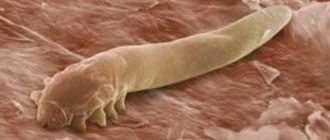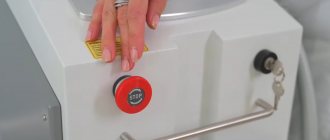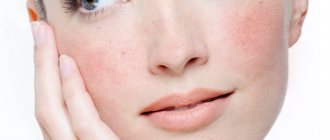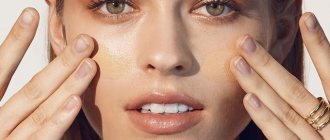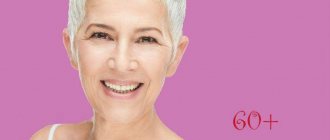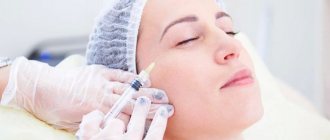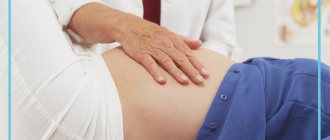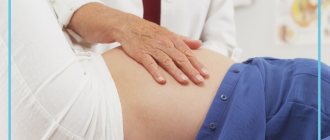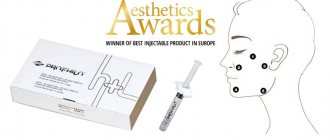Facial rashes concern not only young people, but also those over 30. Is it possible to get rid of acne and pimples forever? What remedies will help deal with them fairly quickly, without causing harm or aggravating the problem?
A safe way to clear rashes and their subsequent disappearance is retinol peeling when used systemically with other cosmetic and medicinal products. It is used at home or in a beauty salon or clinic.
Yellow peeling is a chemical method of removing (exfoliating) the upper layers of the epidermis and cleansing pores. Cosmetological cleansing evens out the color and texture of the skin, stimulates regenerative processes, and rejuvenates the face. The procedure is useful for mature skin and for solving specific problems, which include acne and pimples. Cleansing preparations contain retinol, a fat-soluble vitamin A and antioxidant. The light yellow color of the mask applied to the face gives its name to the cleansing action.
Interesting Facts! Famous foreign actresses and actors, before going on the red carpet, use a “celebrity peeling” specially created for them. The result of the mask is an instant effect and no recovery period.
Benefits of Cleaning
Cosmetic exfoliating masks with retinol have proven themselves well in cleansing the face from periodically appearing rashes: they are effective, low-toxic, with a short recovery period of 2-5 days, with virtually no side effects.
Experts recommend using specially selected peeling cocktails that can relieve inflammatory processes in the skin, slow down the growth of sebaceous gland cells and the production of subcutaneous sebum, thereby reducing or eliminating acne and pimples.
If acne occurs as a result of a bacterial infection of the facial skin and is accompanied by an inflammatory process, then the cosmetologist additionally prescribes antibiotics in addition to cleansing masks with retinoid components.
Is facial cleansing allowed for acne?
Manual, hardware, vacuum, ultrasonic, galvanic cleanings help remove impurities and sebaceous plugs from pores, smooth out the relief of the epidermis, and improve cellular respiration.
To achieve better results, hardware techniques are often combined with manual cleaning. However, despite the high effectiveness of facial cleansing, it should be abandoned if there are pustules and other inflammatory elements.170
Contraindications
Retinoic cleaning in some cases is far from a safe procedure. It is hindered by:
- summer or spring seasons with aggressive exposure to ultraviolet radiation;
- pustular inflammation on the face;
- herpes in active form;
- pregnancy and lactation;
- allergies to cosmetics;
- increased pigmentation;
- epilepsy and diabetes mellitus;
- viral infections;
- liver diseases;
- fresh tan;
- wounds, scratches, abrasions;
- chronic diseases in the acute phase.
How to treat pustules* on the face and will peeling help?
Acne cannot be cured with peelings. Exfoliation is a cosmetic procedure that is performed only during the period of remission of the disease. Small pustules* on the face are a direct contraindication to peeling.
There are 3 types of peelings:
- Mechanical. Dermabrasion is carried out using abrasive particles of different sizes. During the procedure, microcirculation is activated and the natural process of exfoliation begins.
- Chemical. Problem skin is treated with drugs containing various acids. They cause a chemical burn, as a result of which the surface layer of the skin is removed and cell regeneration is triggered.
- Hardware. This includes, for example, laser peels. They are performed using erbium and carbon dioxide lasers, removing the surface layers of the skin. Another type of hardware peeling is microdermabrasion. The technique consists of spraying small mineral particles - quartz, aluminum oxide through a nozzle. Then the particles of the fine abrasive substance are removed along with the exfoliated epithelial cells.
How quickly the peeling will take effect depends, among other things, on its type. It may take about a week for the skin to recover after the procedure. During this period, the skin often turns red, itches, peels, a burning sensation and slight swelling appear. These reactions are normal in the first 7-10 days. It is important that the procedure is carried out by a specialist, since these phenomena can easily lead to an allergy to one of the components of the composition.
Is it possible to exfoliate skin with acne?
Peeling helps exfoliate the stratum corneum of the epidermis, cleanse pores, and accelerate cell regeneration. The procedure is carried out using abrasive compounds, fruit acids or degrading keratolytic enzymes. The choice of peeling largely depends on the type of problem that needs to be solved. 171
In the presence of inflammatory elements, mechanical peeling is not performed. Exposure to abrasives can damage the cap of the abscess* and spread the infection. Superficial peeling is allowed, but when performing the procedure, the skin should be thoroughly disinfected and large areas of inflammation should be avoided. 171
Azelaic acid and peelings in the treatment of acne
Acne is the most common skin pathology, which significantly reduces the socio-psychological status of patients. In addition to treatment, some of them, especially with severe forms of the disease, require cosmetic correction. The article discusses approaches to the management of patients with acne by dermatologists and cosmetologists, as well as prescribing patterns for medications and cosmetic procedures. Particular attention is paid to azelaic acid, which is used in both dermatological and cosmetology programs. An algorithm for its use in preparation for and after cosmetic procedures is presented.
Combined cosmetic programs (peeling and 15% azelaic acid gel (Azelik))
Acne ( acne vulgaris
) is a chronic inflammatory dermatosis, which manifests itself as open or closed comedones and inflammatory skin lesions in the form of papules, pustules, nodules [1]. This is one of the most common dermatoses. J. Leyden found that pathology affects 85% of people from 12 to 24 years old, 8% from 25 to 34 years old, 3% of people from 35 to 44 years old. The incidence of acne in adolescence among both sexes is almost the same; in later periods it is significantly higher in women [2].
Diagnosis of acne is based on the clinical picture. The rashes are localized mainly on the skin of the face, upper extremities, upper chest and back.
After acne resolves, atrophic scars often remain, and less often, hypertrophic and keloid scars [2].
Rational therapy is determined by pathogenetic factors. We are talking, in particular, about the impact on follicular hyperkeratosis, increased sebum production, and the proliferation of Propionibacterium acnes
, supporting the inflammatory process.
When prescribing treatment, it is necessary to take into account the duration, prevalence, severity of the process, the type and depth of skin damage, the degree of sebum production, the presence of complications, hyperpigmentation, and scar changes. The physical characteristics of the patient, the state of his hormonal system, anamnestic data, the presence or absence of previous therapy and its adequacy are also important. You should find out what cosmetic products the patient uses [3].
Treatment, taking into account the complex pathogenesis and the dependence of acne on the genetic constitutional characteristics of the body, must be consistent and long-term.
It is advisable to combine topical therapy with azelaic acid with cosmetic procedures that are aimed at enhancing the reparative functions of the skin [4].
Azelaic acid
Azelaic acid affects a greater number of pathogenesis links. It has antimicrobial activity against P. acne
and
Staphylococcus epidermidis
, reduces the content of free fatty acids in skin lipids, normalizes keratinization in the follicles of the sebaceous glands.
Azelaic acid in vitro
and
in vivo
inhibits the proliferation of keratinocytes and normalizes the processes of terminal differentiation of the epidermis, accelerates comedolysis. The antityrosinase effect of the substance has been proven: it inhibits the activity of tyrosinase (the key enzyme of melanogenesis) and melanocytes. Therefore, azelaic acid can be used for post-inflammatory hyperpigmentation. Recent studies have established the antiandrogenic effect of the drug. Azelaic acid selectively inhibits the activity of type 1 5-alpha reductase. This enzyme is responsible for the conversion of the androgen testosterone in sebocytes into its active metabolite dihydrotestosterone. The latter stimulates the growth and maturation of sebaceous gland cells (sebocytes) and the formation of sebum [5].
Azelaic acid –
one of the promising medicinal agents, as it can be used for various forms of acne. It does not accumulate in the body, does not have systemic, teratogenic or mutagenic effects, does not increase skin sensitivity to ultraviolet radiation and does not cause the development of drug resistance in microorganisms.
The above provides grounds for improving treatment methods. In particular, azelaic acid as monotherapy can be used for mild forms of acne or contraindications to other drugs and treatments, as a combination therapy –
for papulopustular forms of acne, as maintenance therapy
–
in combination with cosmetic procedures [6].
Today, as part of the implementation of the import substitution program, it is important to use domestic azelaic acid preparations with an optimized composition of active ingredients and a modernized base. This should increase the effectiveness of therapy for patients with acne of varying severity, reduce the duration of treatment until clinical remission is achieved, the frequency and severity of side effects, and increase compliance with treatment. The economic component is also important [7].
For practicing doctors, the Russian drug Azelik (15% azelaic acid gel) may be of interest.
Azelik base contains squalane –
high-quality emollient that does not have comedogenic properties. Microdrops of squalane fill the space between the scales of the stratum corneum of the epidermis, help restore the skin barrier and thus reduce transepidermal water loss.
It has been proven that Azelik affects the morphofunctional parameters of the skin: it increases hydration, reduces sebumetry and the severity of relief [8].
Peelings
Recently, more and more works have appeared in the scientific literature on the use of drugs in combination with cosmetic procedures. However, almost all cosmetic procedures are accompanied by damage to the skin and, as a consequence, the development of an inflammatory reaction.
B. Dreno et al. Recommendations for the treatment of acne in adult women were published for the first time, in which auxiliary therapy and cosmetic correction were included in a separate section [9].
Ya.A. Yutskovskaya noted the high effectiveness of topical acne treatment with azelaic acid in combination with controlled microdermabrasion [4].
A.V. Saibel presented data supporting the feasibility and validity of the combined use of azelaic acid gel and chemical peels. Regular peeling –
an integral component of the treatment of non-inflammatory and papulopustular forms of acne in remission. The use of azelaic acid gel provides synergistic action [10].
Peeling with alpha hydroxy acids.
The group of alpha hydroxyl acids (AHA) is represented by glycolic, lactic, malic, mandelic, tartaric and citric acids. By disrupting sulfate, sulfite and sulfide bonds between corneocytes, they weaken cohesion between cells and initiate active desquamation.
ANA peeling not only causes division of basal keratinocytes, but also enhances the synthesis of epidermal lipids by spinous cells and helps restore the normal structure of the stratum corneum. Histological studies have proven that ANA peeling reduces the severity of follicular hyperkeratosis, has a comedolytic effect, and promotes regression of the perifollicular inflammatory infiltrate. Restoring the outflow of sebum from the mouth of the hair follicle prevents the proliferation of conditionally pathogenic skin anaerobes, and microbial colonization of P. acnes
decreases to physiological levels.
Thinning of the stratum corneum increases the permeability of the skin to topical antibacterial and anti-inflammatory drugs.
ANAs do not have a systemic effect, are non-toxic, well tolerated, and non-addictive, which allows them to be used for a long time (three –
five years).
The most commonly used AHA is glycolic acid. It has better penetrating ability due to its lower molecular weight.
For effective correction of involutional and post-inflammatory skin changes, achieving a comedolytic effect, high concentrations of ANA (50–70%), pH are recommended
Pyruvic acid (PVA), according to the results of a number of studies, has keratolytic, antimicrobial and sebostatic effects. In the skin, PVK is in physiological equilibrium with lactic acid; with the participation of lactate dehydrogenase, the formation of PVK from lactic acid is possible. The low molecular weight and pH (about 2.4) of pyruvic acid provide a high degree of penetration, which allows for superficial-medium (40–50%) and medium peels (70%).
The results of clinical studies indicate the high effectiveness of PVK in the correction of hyperkeratoses and post-inflammatory skin changes in patients with acne.
Peeling with mandelic (phenylglycolic) acid is not inferior in effect to peeling with glycolic acid. However, due to the fact that mandelic acid molecules are larger, their penetration rate is lower. This results in less irritation and less intense desquamation.
Mandelic acid has antibacterial and antimycotic effects, so its use in acne patients is advisable.
Peeling with mandelic acid is recommended for small amounts of comedones and for patients with thin and sensitive skin.
Salicylic peeling
. Salicylic acid, as a keratolytic, denatures proteins. It has anti-inflammatory and antiseptic properties. In addition, the high lipophilicity of salicylic acid promotes deep penetration into the hair follicles and pores, which provides a pronounced comedolytic effect. This explains the effectiveness of salicylic peels for acne. Depending on the concentration, it is possible to carry out superficial (10% salicylic acid), superficial-medium (15–20%) and medium (30%) peeling. The rehabilitation period is characterized by large-plate peeling and moderate erythema [11].
Combined alpha-beta peels
– AHA peel, usually glycolic acid (30–50%), combined with salicylic acid (2–5%). Thanks to the keratolytic effect of salicylic acid, the penetration of ANA increases, which allows for more active peeling.
Alpha-beta peels are recommended for oily porous skin, thin oily seborrhea, and multiple closed comedones.
Schemes for combining azelaic acid with peelings
Options for using 15% azelaic acid gel with peelings are presented in the table.
Using 15% azelaic acid gel before or after peeling allows [10]:
- thanks to anti-inflammatory and antimicrobial effects, expand the possibilities of performing cosmetic procedures (various types of peelings) and prevent the risk of relapses;
- eliminating hyperkeratosis, achieving uniform penetration of the chemical agent during peeling and, as a result, reducing the risk of developing undesirable reactions; in the post-peeling period, maintaining and prolonging the results of exfoliation;
- antityrosinase action prevents hyperpigmentation.
Conclusion
An integrated approach, continuity of dermatological and cosmetological programs, the correct combination of basic therapeutic measures with acceptable cosmetic correction are the key to success in solving acne problems.
The use of 15% azelaic acid gel (Azelica) significantly expands cosmetology programs for acne due to the synergy of action.
How is acne treated using Azelik®️ gel?
Many people think that they can simply come to a cosmetologist and “order” the procedure. But that's not true. The cosmetologist conducts an examination and recommends which procedure is best to perform to improve the patient’s skin condition.
A combination of cosmetic procedures, drug treatment and properly selected cosmetics is exactly what is needed for acne-prone skin. Anti-acne therapy should be prescribed by a dermatologist. For mild to moderate acne, this may include the use of azelaic acid, such as Azelik®️ gel.5,9 The drug should be applied to the skin twice a day.5
*inflammatory element of acne
